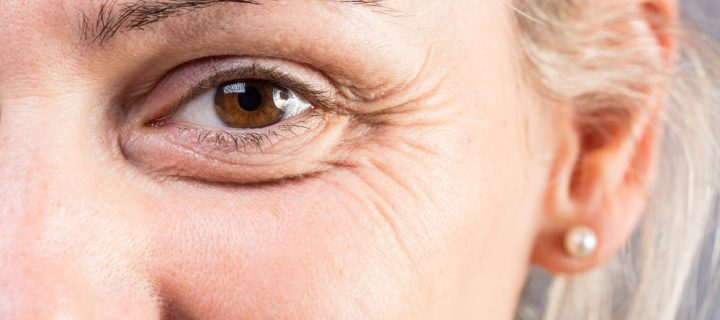Scientists have developed a pseudo-skin that’s placed over the real thing, which reduces the appearance of wrinkles or bags on the eyes.
Once the skin is put onto the, uh, skin, the invisible elastic film has a formula that dries to form a layer that “mimics the properties of youthful skin”.
For now, the product is being explored as a commercial cosmetic product, but US scientists are exploring other uses, namely to deliver medicine, or to provide protection from the sun.
A mixed team from Harvard Medical School and the Massachusetts Institute of Technology created the polysiloxane polymer in a lab using molecules of silicone and oxygen as the building blocks. Though it’s synthetic, it mimics real skin very closely, while still acting as a breathable, protective layer.
The temporary skin locks in moisture, which promotes elasticity in that area of the skin. As skin ages, it loses firmness and elasticity; the polymer counters this. To the naked eye, the second skin makes the covered area appear smoother, firmer and less wrinkly.
“The results [with the polymer film] appear to be comparable to surgery, without the associated risks. Further research is needed, but this is a novel and very promising approach to a common problem. I will follow its development with interest,” said Dr. Tamara Griffiths of the British Association of Dermatologists.
Prof Robert Langer, who led the work at MIT, added: “Developing a second skin that is invisible, comfortable and effective in holding in water and potentially other materials presents many different challenges.
“It has to have the right optical properties, otherwise it won’t look good, and it has to have the right mechanical properties, otherwise it won’t have the right strength and it won’t perform correctly.”
Despite the need for many more studies, and the fact the skin would also need safety approval from regulators, the researchers are optimistic about the skin’s potential. That includes vanity purposes, as well as other more serious medical implications.
“We are extremely excited about the opportunities that are presented as a result of this work and look forward to further developing these materials to better treat patients who suffer from a variety of skin conditions.”
Photo credit: sruilk/Shutterstock











